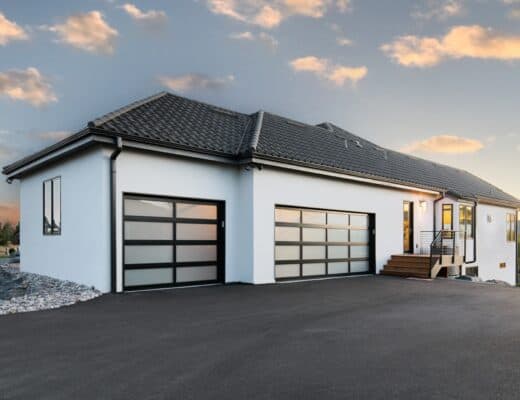Biophilic design is the buzzword of the year for interior design. Nearly every display at the Kitchen and Bath Show (KBIS) this year incorporated an element of biophilic design. There was no escaping it, and for good reason.

We’re all seeking a return to nature and an escape from the sterile environments we’ve been surrounding ourselves with the last few years and biophilic-designed spaces are the answer.
What is Biophilic Design?
Biophilic design is an interior design trend that seeks to bring the natural world into homes, offices, and other indoor spaces. This design style is based on the idea that people have an innate connection to nature and that incorporating natural elements into our built environments can have a positive impact on our health and well-being.
Biophilic design is becoming increasingly popular as people look for ways to improve their living spaces and promote a healthier lifestyle.
The Importance of Nature in Interior Design
Studies have shown that people who have access to natural light, green spaces, and other natural elements experience reduced stress levels, improved mood, and increased productivity. Additionally, exposure to nature has been linked to reduced rates of depression, anxiety, and other mental health issues.
By incorporating natural elements into interior design, biophilic design aims to bring these benefits into your home.
Elements of Biophilic Design
Biophilic design incorporates natural elements in several ways. These elements include:
Natural light
Biophilic design seeks to maximize natural light in indoor spaces to help people feel connected to the outdoors. This can be done through large windows, skylights, or other design elements that allow natural light to penetrate into the interior.
Plants
Plants play a key role in biophilic design as they help to bring the natural world into the built environment. Incorporating plants into a space can be done through potted plants, wall-mounted planters, or even vertical gardens.
Natural materials
Biophilic design often incorporates natural materials like wood, stone, and other earthy materials to create a connection to the natural world. These materials can be used for flooring, countertops, or even furniture.
Water
The sound and sight of water can have a calming effect and help to create a sense of tranquility in a space. Biophilic design often incorporates water features like fountains, water walls, or even aquariums to bring this element into the built environment.
Biophilic design is a growing trend in interior design that seeks to bring the natural world into the built environment. By incorporating elements like natural light, plants, natural materials, and water, biophilic design can help to promote well-being, reduce stress, and improve mental health.
Whether you are a designer or homeowner, incorporating biophilic design into your bedroom, kitchen, or bathroom can be a great way to create a more harmonious and relaxing living space.


